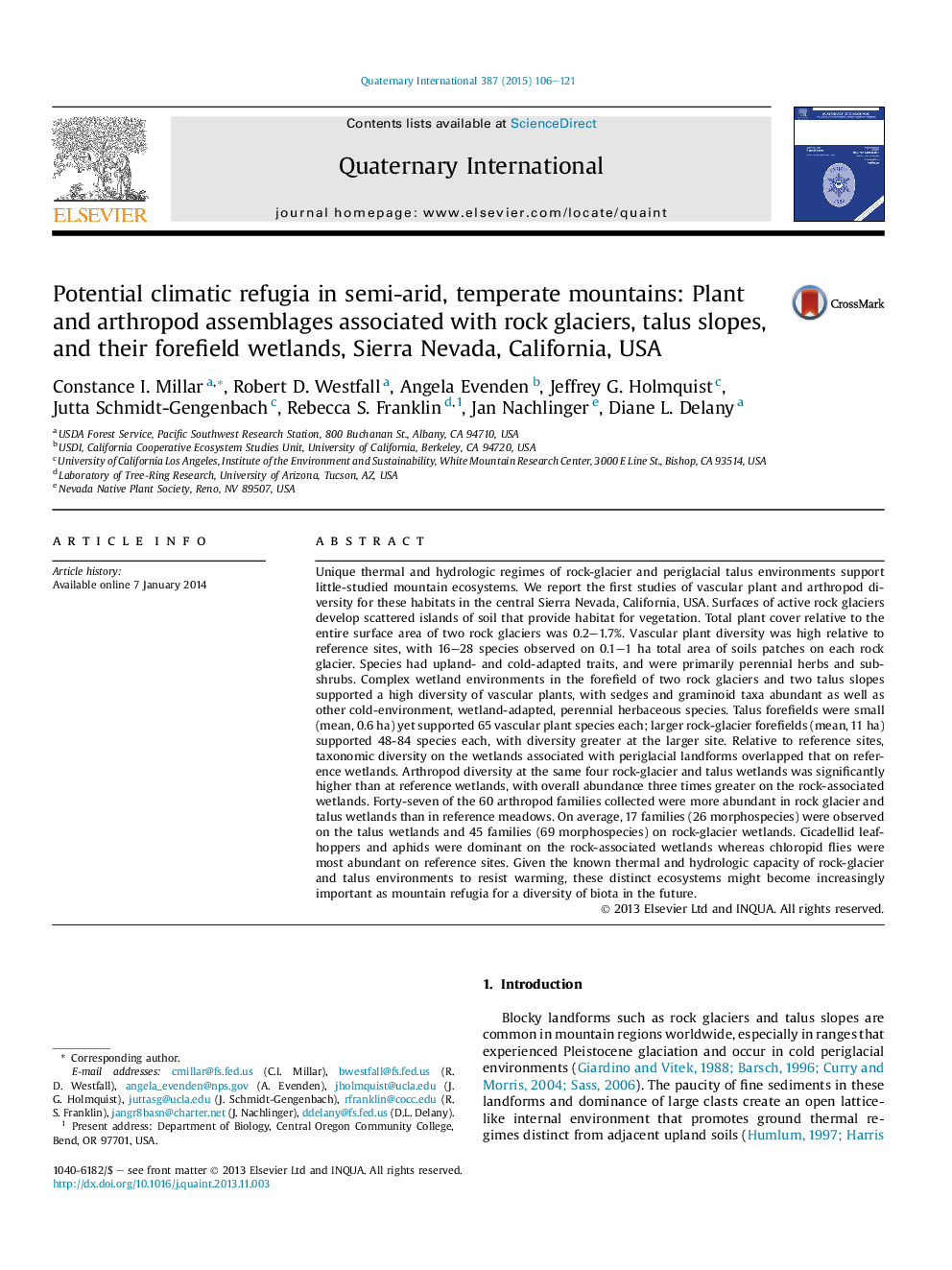| کد مقاله | کد نشریه | سال انتشار | مقاله انگلیسی | نسخه تمام متن |
|---|---|---|---|---|
| 1040549 | 1484111 | 2015 | 16 صفحه PDF | دانلود رایگان |
Unique thermal and hydrologic regimes of rock-glacier and periglacial talus environments support little-studied mountain ecosystems. We report the first studies of vascular plant and arthropod diversity for these habitats in the central Sierra Nevada, California, USA. Surfaces of active rock glaciers develop scattered islands of soil that provide habitat for vegetation. Total plant cover relative to the entire surface area of two rock glaciers was 0.2–1.7%. Vascular plant diversity was high relative to reference sites, with 16–28 species observed on 0.1–1 ha total area of soils patches on each rock glacier. Species had upland- and cold-adapted traits, and were primarily perennial herbs and sub-shrubs. Complex wetland environments in the forefield of two rock glaciers and two talus slopes supported a high diversity of vascular plants, with sedges and graminoid taxa abundant as well as other cold-environment, wetland-adapted, perennial herbaceous species. Talus forefields were small (mean, 0.6 ha) yet supported 65 vascular plant species each; larger rock-glacier forefields (mean, 11 ha) supported 48-84 species each, with diversity greater at the larger site. Relative to reference sites, taxonomic diversity on the wetlands associated with periglacial landforms overlapped that on reference wetlands. Arthropod diversity at the same four rock-glacier and talus wetlands was significantly higher than at reference wetlands, with overall abundance three times greater on the rock-associated wetlands. Forty-seven of the 60 arthropod families collected were more abundant in rock glacier and talus wetlands than in reference meadows. On average, 17 families (26 morphospecies) were observed on the talus wetlands and 45 families (69 morphospecies) on rock-glacier wetlands. Cicadellid leafhoppers and aphids were dominant on the rock-associated wetlands whereas chloropid flies were most abundant on reference sites. Given the known thermal and hydrologic capacity of rock-glacier and talus environments to resist warming, these distinct ecosystems might become increasingly important as mountain refugia for a diversity of biota in the future.
Journal: Quaternary International - Volume 387, 11 November 2015, Pages 106–121
